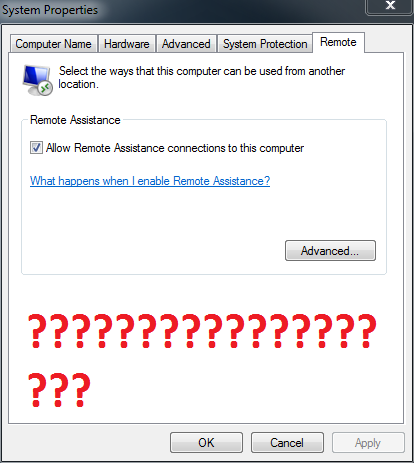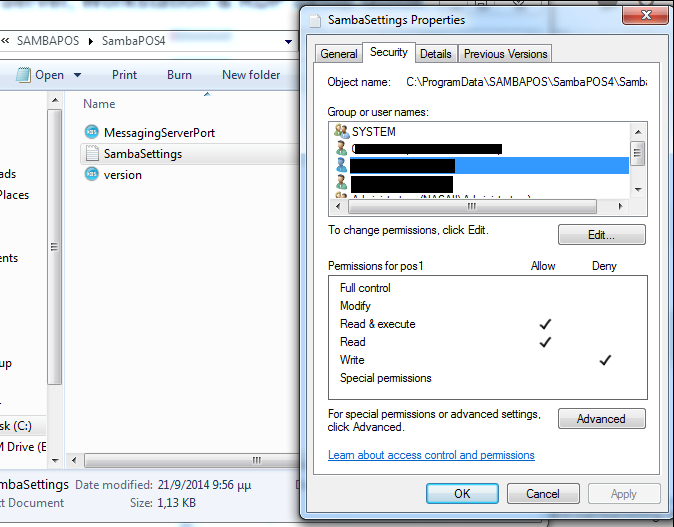This guide I wrote a while ago is based on SambaPOS V3.0.24, but is applicable to V4.
It is still in draft, but covers
- Server setup
- Terminal setup
- RDP setup
- Printer setup
This guide I wrote a while ago is based on SambaPOS V3.0.24, but is applicable to V4.
It is still in draft, but covers
need your suggestion…should we have a separate server or can we use same PC as both server and workstation.
You can use same PC for Server and workstation. All you need to do is create different user accounts for remote Desktop users.
You can also refer to below link…
Hello guys, I 'm new here! I want to say a great Thank You, I found the guides very informative and also love the software!! I want to provide a few additional tips that might help new users to understand how to setup Samba POS according to their needs, that took me a while to understand.
As Emre says here: SambaPOS Database Configuration
you can install Samba POS for 3 different cases.
Demo mode: check on the software without maintaining a database of any changes that you might make.
(Useful in having a first look on Samba!)
Single User mode: in this case the software maintains a database and keeps all the changes you might wanna make but only for the specific computer and specific windows user that is been installed to.
(Useful in stores with a single tilt, or single cashier)
Multi User Mode: This is the most common case for those that want to use POS software on their cafe, restaurant, bar etc. There are very good guides in the forum so there is no need to write anything further,
Step by step on how to Configure multiple concurrent RDP clients to run SambaPOS (IPHONE ,IPAD, Galaxy tablet)
,just to clarify that this is the only case that you need to install the SQL Server Express from Microsoft site.
So you need this setup if you are planning to use a computer as main cashier (server) and tablets (terminals) for the waiters. Since this setup varies a lot for each and every one of us I want to give some examples.
You can have one computer and many tablets (one cashier and many waiters)
You can have many computers and no tablet (many cashiers only, like a supermarket)
You can have many of both!!
In every case you need server. Server is the computer that you select to store your “Database” and runs the “Message service” on the above guide.
Everything else that runs on the network are clients or terminals.
The most confusing setup is when you want to have One computer and Many Tablets (android or iOS) that connect to the first one. In this case you need to add additional users on the computer in order to allow tablets to log on through Remote Desktop. Each tablet needs to log in to a different windows user to make everything work perfectly!
One last tip. Since most of us run Windows 7 Home as they came with our laptops, you can enable RDP using W7-SP1-RTM-RDP-v4 but it won’t allow “standard” users to connect through RDP.

In this case you need to add windows user accounts with “admin rights”

Otherwise when you select user role for each rdp user,in Samba POS,

they will keep changing everytime you select it for each user.
But beware that all users will have admin rights, so they are also capable of tweaking your windows !
Anyway thats all! Hope I 've helped! 
This is just my personal opinion and may not reflect how everyone thinks however, Windows 7 home does not support RDP terminal services… it also does not support multiple concurrent connections you have to hack it for both. I do not know that I would trust a setup that requires every user to be a full admin just to run an rdp session. Sounds like a possible disaster waiting to happen.
It is a business environment everyone can make their own decisions but I would highly recommend getting the right systems in place and not rely on hacks/risky alternatives for your business just for sake of saving a few dollars.
All that said my recommendation for a true RDP setup in a business environment where speed, reliability, and security matter would be to invest in your infrastructure wisely. For the server PC I recommend investing in Server editions of windows so it can support RDP natively and multiple concurrent connections out of box without hacks or license violations. It also handles RDP and server environments a lot more efficiently which is important for a business.
I make a a lot of posts similar to this when I see these sort of work-arounds because I feel it is important people understand this. I see a lot of mistakes in small business with computer infrastructure just because they think they are saving money. It almost always comes back to bite them later and they end up spending more$.
My recommendation is Windows Server 2012 Essentials edition. It supports up to 25 concurrent users.
OEM Version
I agree. Windows 7 built to work on client PC’s, not on a server. So it does not have server related features. A Server OS on your Server PC will work a lot better.
Is there a setup manual for windows server ? Like setting up remote desktop server?
You can refer to below links:
http://www.concurrency.com/blog/remote-desktop-services-in-windows-server-2012-step-by-step-guides/
http://technet.microsoft.com/en-us/library/dd883275.aspx
http://www.public.madeinengland.co.nz/how-to-setup-remote-desktop-services-2012-step-by-step/
these versions of windows don’t allow remote desktop service (RDP), so take care
@unikbit what versions are you talking about? Essentials can do RDP but it only supports 1 client. Standard Edition Will support multiple RDP.
@Jesse these days a lot of people who tries to find a workaround for rdp issues visiting us. 
we are talking about multiple rdp connections not 1, so the standard version should be the choice. Also you need to buy RDP calls. Let’s say you have a restaurant with 10 waiters and want to give them tablets to take orders. Here are the costs for software only:
Windows Server Standard 2008/2012 - 800 USD
http://www.amazon.com/gp/product/B00GIZBDHK/ref=as_li_tl?ie=UTF8&camp=1789&creative=9325&creativeASIN=B00GIZBDHK&linkCode=as2&tag=magneticcooky-20&linkId=MHMDAFRXVB37TCEV
RDP - 10 CALLS - 500 usd
http://www.amazon.com/gp/product/B00960MX8W/ref=as_li_tl?ie=UTF8&camp=1789&creative=9325&creativeASIN=B00960MX8W&linkCode=as2&tag=magneticcooky-20&linkId=BILZXZNYREDPIOP4
Total:1300 usd
So are you saying it is too expensive?
Yeah we all agree.
Everyone making a lot of money from that business… but… OMG, wait… I’ll immediately increase SambaPOS license prices by %300.
Well, still makes $0… 
That price is pennies when you compare it to other POS solutions and those solutions would still require the same setup as well for RDP… I am really not sure where it became OK to cheat this and accept a hack in a business. This is something almost every business owner plans around and budgets for.
I am sorry but $1300 for server software to handle 10 devices is not expensive. It just depends on how you look at it I guess. I think the disconnect happens because people are not used to IT in business environment they are used to home computers etc. So this seems like a shocking price to them. In business world thats actually rather cheap considering the software it will run is free.
Microsoft licensing is not cheap. This has been discussed before and it has nothing to do SambaPOS. Any POS you buy will need the same licensing.
By the way, to properly license a 10 user environment you need to add 5 more Windows Server 2012 CALs. The software you posted includes only 5 CALs. 
I think I didn’t express myself very well. Still I didn’t used the software to see how well is performing.
I don’t want to say is expensive just everyone to know what kind of licencing need to use for a server IT infrastructure and what kind of costs to expect
Hi All - you can try other alternatives for RDP connections:
http://www.thinsoftinc.com/products.aspx
I have used this software some time ago on a WIn Ser 2003 and it worked great. It seems to have evolved quite well but I have no recent experience with it.
DISCLAIMER: I have absolutely no connection with this site or company other than I was a customer. I found the service to be of a good standard. Please report your experience back here (if that’s ok emre…).
Hi guys, I’ve been using SamabPos since December 2014. It’s been brilliant! Thank you to everyone who helped build this system.
Unfortunately I was starting up a new business and had to rely on someone else setting up Samba for me, as I didn’t have the time to do it myself. This has resulted in a few issues with my kitchen display and backup to dropbox not working.
I decided I’d take the time to start from scratch and do it myself.
I was wondering if it was possible to use Ubuntu http://www.ubuntu.com/download/server as the server database and Windows 7 as the clients. I know that Ubuntu is a lot more stable, resource friendly and secure. It is also a much more cost effective option for businesses who are start-ups like myself. Any advice or information on this would be greatly appreciated.
Thank you
You do not need a dedicated server computer. Use one terminal as your server and order entry terminal. I use one computer as a server(and order entry terminal) and three other computers connect to this computer. No issue whatsoever with this setup.
SambaPOS works with Microsoft SQL thus no Ubuntu would not work for the database server. Most real tests show windows as more stable. The whole Linux thing being more stable is very subjective.